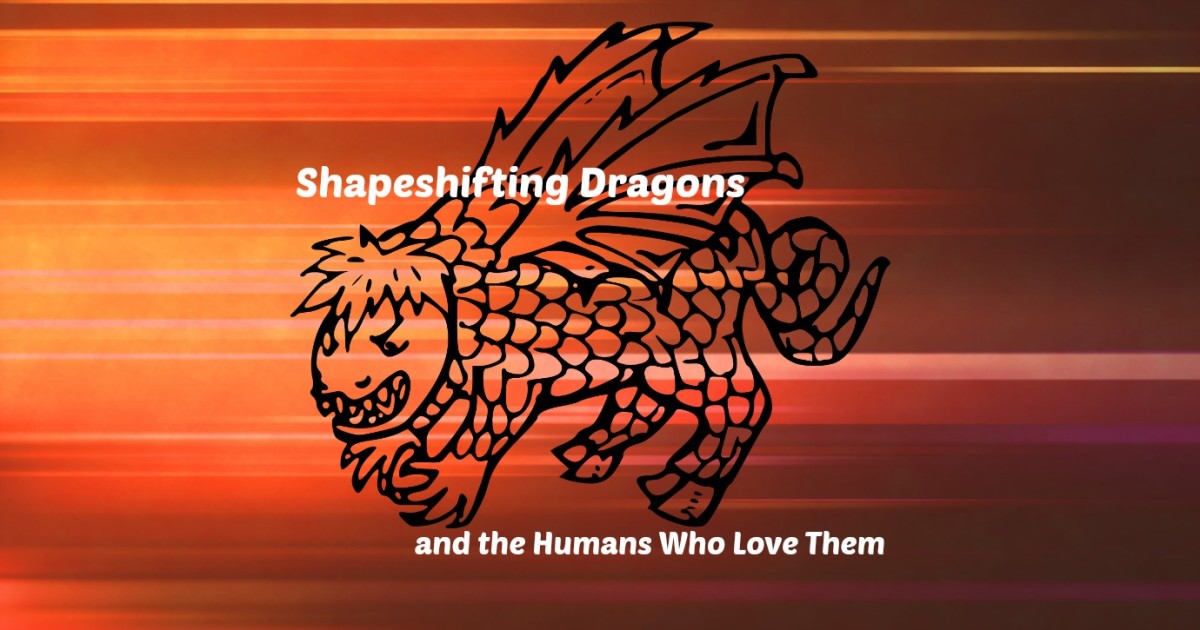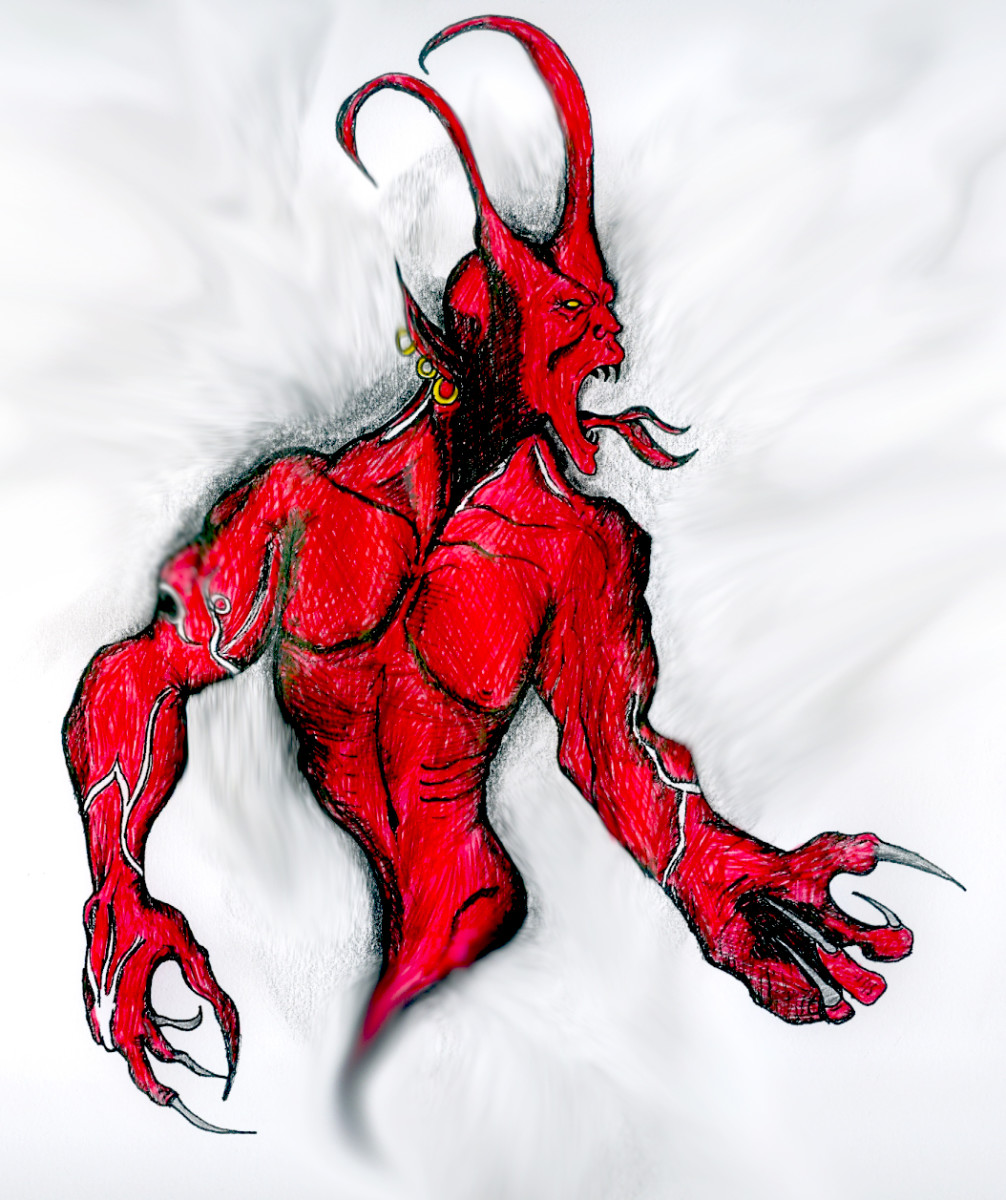Basics of Shapeshifting
Shapeshifting is a term used to describe an ability (intentional or accidental) to transform from a human into an animal. In modern society, it's an ability largely associated with Therianthropy, a belief in the existence of and connection between an animal and human self. It's thought to require a flexible mind, concentration and a strength of will.
Everyone is thought to be capable of shapeshifting, but many consider it a more natural occurance for Therianthropes. The following article will help everyone, Therianthrope or not, to shapeshift.
Types of Shifts
When a person thinks of shapeshifting, it’s Hollywood’s messy man-to-beast transformation that comes up, typically. Despite having a make-over, to more tidier, magic-sided transformations, the classics werewolf still reign supreme.
Therianthropes do shapeshift, but nothing as flashy or messy as Hollywood’s version.
The following of shifts are types you should focus on:
Astral Shift
An astral shift is the process of shifting on the astral plane. The astral plane is said to be a different plane of existence parallel to our own. It is there that our thoughts can shape that reality. When walking the astral plane, the Therianthrope is able to take their animal shape.
They can do whatever they wish on the planes, even manifest onto the physcial reality. They can be felt, but normally not seen, much like ghost.
Aural Shift
When a person performs an aural shift, their energy changes to match their chosen animal. These sort of shifts can be felt, maybe as an uneasyness towards that person, or a sense of something different. It’s rare that these shifts have an effect on the physical body.
Dream Shift
There are two types of dream shifts that exist: Lucid Dream Shifts and Unlucid Dream Shifts. The word ‘lucid’ indicates that a person is aware that it is a dream, and that they can do whatever they wish within that dream. The word ‘unlucid’ indicates that the shifter is not aware that it is a dream, nor do they realize that they can do anything in the dream. In the waking world, the dream shifter appears human because the shift doesn’t occur on the physical. The dream shifter can also appear human in the dream, until they choose to take an animal form.
Etheral Shift
An etheral shift occurs in the first layers of an aura. The first layer of an aura is like a body's blueprint. It's very close to a person's body, like a second skin. If a person can see auras, they'll witness an etheral shift, but most people be aware of it or simply feel it as something off.
During an etheral shift, it's possible to separate from your physical body. During time, you'll be able to walk around, explore and interact with other etheric objects.
Mental Shift
When a Therianthrope performs a mental shift, their shedding a human mind for an animal one. While many keep a piece of their human selves, some are able to shed it completely, which makes it a dangerous shift. If you're a prey animal, that wouldn't pose a problem, but it could cause problems for predator animals.
A mental shift requires a flexible mind, concentration and strength of will. If proper precautions are taken, it's a beneficial and fun type of shift. Typically, a Therianthrope experiencing a mental shift won't rampage or kill people.
Think of them like an animal. If you don't present a situation, then a situation won't occur.
Types of Shifters
Since Therianthropy is known for shapeshifting, we're going to breifly review their brand of it. You'll gain a perspective on real shapeshifting and potential effects it has on different people. You are adapting a primal, animalistic side of yourself, so that could cause problems and/or everyday issues. The problems and issues faced by Therianthopes could be exclusive to them, but it's educational and beneficial to know it exists.
Typically, an average Therianthrope is capable of shifting to a single animal side, known as their "phenotype." In rare cases, a person has a "condition" that effects his/her shifting. There are different names for each type of condition: Suntherianism, Contherianism, Polyism and Cladotherianism.
A Contherian is a person that is stuck between an animal and human mind. It gives them characteristics of their animal, but with every benefit of a human mind. Oftentimes, their behavior, responses and reasoning is heavily or partially animal-like, so strong emotions or stimulations could rouse unpredictable or dangerous responses. The shifting capabilities of Contherians are unclear, but many claim them to have an ability to take on either an animal or human side for short periods of time.
A Polyshifter is a person that is capable of choosing any animal for shifting and a phenotype. While many have favorite animals, they're not limited to that animal.
(When broken down, the term ‘Polywere’ actually translates as ‘many man.’ (Historically speaking, the term were can be derived from the old English terms of ‘weri’ or ‘were.’ The term ‘were’ is a prefix meaning ‘man’ and was used for words such as werewolf, which then translated it as man-wolf. The term ‘weri’ means ‘to wear,’ so the term werewolf could also mean ‘wearer of wolf skin.’ The modern term ‘Polywere’ eliminated the relation to beast and created a word that could translate as ‘many man’ or ‘to wear many.’ While a normal Therianthrope has only one phenotype, a polywere can have many phenotypes. These are the animals they identify as, and are able to shift to. Polywere is often claimed to be another term for Polyshifter.)
A Suntherian is a person incapable of maintaining a constant, stable shift. For reasons unknown, these types of Therianthropes rapidly transition from multiple shifts with a single or many phenotypes to human shift without stability or balance. It makes many Suntherians unstable and potentially dangerious.
A Cladotherian is a Therianthrope with a connection to all animal types within his phenotype. For an example, if he/she has a connection to canines, then a connection will exist to all canines—not just one.
There are no accounts of a non-Therianthropes with such conditions, but please practice caution regardless.
The Dangers
While shifting can be fun (not to mention cool), it can also be dangerous. There are several things you should avoid, and many you should be cautious of. Please read it and don't skip paragraphs.
The easiest and most favored shift is mental. As stated above, a mental shifter sheds their human mind for an animal one. In any given situation, that person is going to react like an animal. If a person practices frequently and on a schedule, shifting should be smooth, easy and natural. If that person is a prey animal, that shouldn't pose a problem, but it could cause issues for predator animals. For an example, the wolf is a large predator that protects and gives loyalty to a pack. During a shift, what would happen if a person saw someone hitting pack? Given wolf behavior and hierarchy, wouldn't that person protect pack? What would happen if that hitting was simple an act for a play or sport?
While some keep a piece of their human minds, there are others that are able to completely shed it. If you practice frequently and on a schedual, that will happen more easily and naturally. If you reach that point, you could shift without realizing it or behave and think like your favored animal. Be careful of that and plan accordingly.
There have been stories of wolf phenotypes attacking people because a threat was seen to a pack member, but that doesn't mean that threat was real. While no harm was done, it still happened and should be taken under control. Learn from that and avoid it.
When a shift is easy and natural, people tend to shift unnoticed or during situations that an animal nature is preferable. While that's wonderful for practice, it should be noted that shifting during activities like driving, extreme sports or cooking are a bad idea. It has happened unintentionally to Therianthropes, so be aware of that. (The law doesn't pardon you for accidents due to shifting.) If you shift to adapt an animal nature, please keep it to a minimum and try to do it on your own (without shifting).
I advice you to keep notes on your behavior as in a normal state of mind, without shifting. Then practice your shifting, and take notes on your behavior afterward. Be careful to note differences, and keep track of your own mind, health and safety. If you notice changes happening rapidly, or people notice your personality changing, take a break from shifting and evaluate what happened. Be careful to stay balanced and sane.
If you experience ill effects from shifting with more frequency and intensity, cease practice immediately. I also advice you to seek medical attention.
When ending a shift, please remember to fully shed the animal half. Give yourself time to adjust to the human side again, making sure you’ve fully adapted your human side and can function properly. Activities such as driving should be avoided at least half an hour (to an hour) after a shift. When you become more familiar with it, and are able to control it, these precautions may be unneeded.
Please remember to do your research. If there are stories written by Therianthropes about their shifting experiences, read it! Information is valuable, and the more you know is the better!
How to shift
Since we’ve covered the basics, we’ll now go on to study two simple exercises designed around different types of visualizations. We’re going to cover more than one because different people will require different focus points. These exercises aren’t the only way to shift. Please remember to be creative, and come up with your own that you feel works for you.
First, though, let’s take a brief look at grounding and centering.
GROUNDING & CENTERING
If you’re a energyworker, pagan or psychic, you’ll probably know how to ground and center. In case you don’t though, we’ll go through a simple exercise you can do anywhere you feel comfortable.
When we speak of centering, we’re speaking of the action that will gather your energy into yourself. Feel your energy around you, in you and all over you. If it helps, imagine a cloud of light. When you have that in your mind, imagine drawing it in. Imagine it rushing in like a wave, and calming down to turn into a pool.
When you feel you have centered yourself, gather your energy and imagine them like roots growing into the Earth. Like the roots of a tree, drive it deep, and imagine yourself cycling energy into the Earth, and back into yourself. Imagine it filtering you.
Do you understand? If not, click here.
The brief look at grounding and centering was important for your next two exercises. It creates a foundation to build on. Before we go on to learn the two methods, pick your animal. For the exercise, I’ll pick a panther.
Shifting Method 1
The first method we’ll learn is visualization through sensations. While some people can focus by imagining the occurrences in their mind, there are those that do better when they imagine feeling the occurrences. This method goes well with people who work better with the five senses. For the first method, let’s focus on the senses.
Before we begin the shift, we’ll start with relaxing ourselves, centering and then grounding. Continue when you feel relaxed.
If you’ve chosen an animal, focus on it without thinking of anything else. Bring up the way it would feel, it’s behavior, it’s personality, the color–everything you can about that animal. Focus on it.
With that in your mind, imagine the feeling of your animal coming over you. Start with the instincts, behavior and personality. Let your mind slip into the mind of your chosen animal. Feel it overcome you, and move as your animal mind wills it. Relax, and sink yourself into it. Let it overcome you.
In the next step, feel the fur and the limbs of your animal. Since I have chosen a panther, I will feel the paws, with their sharp nails, and the fur, soft and sleek, bursting over my skin. Imagine the feel of your animals face growing out of yours. Combine that with your animal mind, and give yourself over to it.
Shed your human self, and feel the body of your animal. In my case, the panther. If you didn’t work well with that method, perhaps a more visual method would be better for you. Remember, though, be creative. If these don’t work for you, come up with your own. As long as it works for you, that’s all that matters.
Shifting Method 2
The second method we’ll learn is based on images. There are some people who focus better when they experience things through their mind’s eye, rather than feeling it through their body.
As we did before, try to relax, center and ground. These are important. Proceed when you feel you’re able.
The second method will require you to close your eyes. If you’ve chosen your animal, please bring up a detailed image of it now. See it in your mind. Add as much detail as you can–feel, smell, behavior, etc…
If it helps, you can imagine yourself and your animal in a place of your choosing. When you see your animal, walk towards it and place yourself near it. Examine it, taking in the details, and focus on your animal.
When you feel you’ve studied your animal long enough, reach towards it. Feel it beneath your hand. Imagine yourself melting into your animal, and it melting into you. Imagine your animal and you merging as one, melting into each other until there is only you and your animal in one form.
When this is complete, imagine yourself merging into your animal. Become it. Let the animal melt into you and take over the human half.
Relax. Become the animal.
These two methods may or may not work for you. If these didn’t work for you, then try another method or invent your own. Remember to be creative and use the method that works best for you.
Coming Back
To shed your animal half, reverse the shifting method of your choice. (Instead of focusing on your animal-side, focus on your human-side.)






